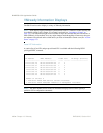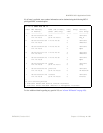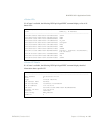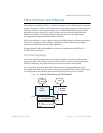
BMD00220, October 2010 187
CHAPTER 14
FCoE and CEE
This chapter provides conceptual background and configuration examples for using Converged
Enhanced Ethernet (CEE) features of the RackSwitch G8124, with an emphasis on Fibre Channel
over Ethernet (FCoE) solutions. The following topics are addressed in this chapter:
“Fibre Channel over Ethernet” on page 189
Fibre Channel over Ethernet (FCoE) allows Fibre Channel traffic to be transported over
Ethernet links. This provides an evolutionary approach toward network consolidation, allowing
Fibre Channel equipment and tools to be retained, while leveraging cheap, ubiquitous Ethernet
networks for growth.
“FCoE Initialization Protocol Snooping” on page 195
Using FCoE Initialization Protocol (FIP) snooping, the G8124 examines the FIP frames
exchanged between ENodes and FCFs. This information is used to dynamically determine
the ACLs required to block certain types of undesired or unvalidated traffic on FCoE links.
“Converged Enhanced Ethernet” on page 192
Converged Enhanced Ethernet (CEE) refers to a set of IEEE standards developed primarily to
enable FCoE, requiring enhancing the existing Ethernet standards to make them lossless on a
per-priority traffic basis, and providing a mechanism to carry converged (LAN/SAN/IPC)
traffic on a single physical link. CEE features can also be utilized in traditional LAN
(non-FCoE) networks to provide lossless guarantees on a per-priority basis, and to provide
efficient bandwidth allocation.
“Priority-Based Flow Control” on page 200
Priority-Based Flow Control (PFC) extends 802.3x standard flow control to allow the
switch to pause traffic based on the 802.1p priority value in each packet’s VLAN tag. PFC
is vital for FCoE environments, where SAN traffic must remain lossless and should be
paused during congestion, while LAN traffic on the same links should be delivered with
“best effort” characteristics.


















